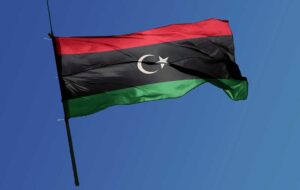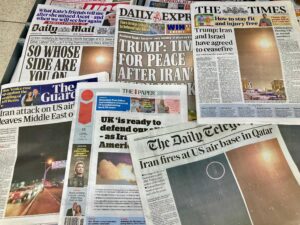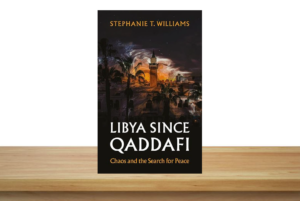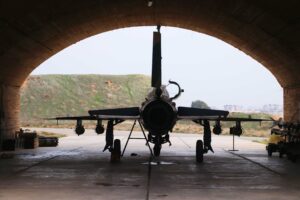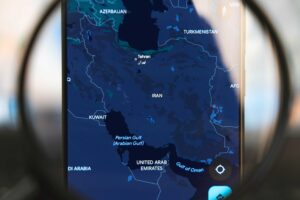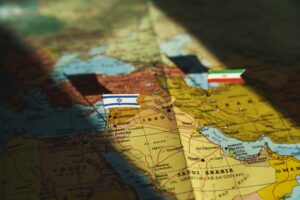It cannot be understated that Libya stands at a critical juncture just over a decade after toppling Muammar Gaddafi’s 42-year-old regime. Predicting where the North African country will go, and how, remains a daunting exercise given the political turmoil caused by a still growing divide between competing visions for its future. Regardless, what lies ahead for Libya’s economy, be it much-needed post-conflict reconstruction or broader transformations to diversify sources of its GDP away from a dependence on hydrocarbon exports, is just as crucial as finding a permanent solution to its current malaise.
The collapse of the national elections in December last year has fueled a resurgence of divisive politicking.
Despite the reprieve afforded by a ceasefire brokered in October 2020, and the relatively seamless installment of an interim authority by the UN-appointed Political Dialogue Forum (LPDF), Libya is far—and possibly moving further away—from a long-awaited reunification of its bifurcated political institutions and government. Khalifa Haftar’s rebranded Libyan Arab Armed Forces (LAAF) along with the Tobruk-based House of Representatives (HoR), remain at odds with the Tripoli-based High Council of State and the Government of National Unity (GNU) headed by the now polarizing Prime Minister Abdelhamid Dbeibah. The collapse of the national elections in December last year has fueled a resurgence of divisive politicking and partisan bickering among prominent actors seeking to dominate the next iteration of Libya’s attempt at democratization since 2011.
An almost irreparable rift is threatening to undermine much of the progress made so far.
Unlike the previous years’ efforts to reunify Libya’s economic, political, financial and security institutions that continued in earnest despite occasional mud-slinging between ‘east’ and ‘west’, this year an almost irreparable rift is threatening to undermine much of the progress made so far. The pursuit of conflicting strategies by both sides in the wake of now indefinitely postponed presidential and parliamentary elections has decimated a hard-fought consensus on the polls and constitution-drafting process. It has also opened up new fissures with the HoR’s appointment of a new interim government and unilateral pursuit of transition processes that prioritize drafting a constitution while delaying elections. Meanwhile, in the west, support for the Dbeibah-led GNU remains relatively intact around a competing strategy that seeks to hold parliamentary elections first—effectively usurping the HoR—then dealing with constitutional reform and presidential selection last.
Even in this woeful landscape, replete with festering scars and intense division fueled by obstructionist external ambitions, prospects for Libya’s long-term economic re-emergence and growth remain very positive. Underwriting the predictions for reasonably firm headline growth rates are the country’s vast hydrocarbon reserves[i], and a wide recovery scope following years of decline owing to conflict, intransigence and critical governance failures. In addition, Libya’s strategic location endows the troubled state with the longest continuous coastline on the busy Mediterranean[ii]—enhancing its potential for maritime wealth and tourism, coupled with vast and sparsely populated sun-rich desert areas[iii] that elevate Libya’s profile in a looming post-oil world. Furthermore, no decent auguries of Libya’s future can discount the inevitable windfall from a shared proximity to the $17 trillion EU common market[iv], currently the world’s second largest economy.
Even modest improvements in its security dynamics and policy frameworks can quickly translate into double digit economic growth.
In the shadow of all this untapped potential is the fact that Libya finds itself in a unique situation, unlike other conflict-prone or post-conflict states. Even modest improvements in its security dynamics and policy frameworks can quickly translate into double digit economic growth—triple, should crude prices remain elevated for extended periods given that 92% of Libya’s exports come from hydrocarbons[v]. At present, the only foreseeable risk to any long-term turnaround plan for Libya is a forecasted decline in global demand for hydrocarbons. Unfortunately, time is running out for any policy or reforms promoting the establishment of a productive domestic sector to accelerate the diversification away from crude exports.
Before considering how Libya can and should disentangle itself from its current woes, it is crucial to identify and understand the myriad constraints crippling the country’s sustainable development. Structural challenges, macro and micro-level imbalances and multi-sector distortions are hobbling any well-intentioned pursuit to initiate complex reforms and implement much-needed and highly anticipated reforms. At the fiscal level, an almost cultural reliance on crude exports makes most budgetary reforms challenging, including common-sense ones aimed at increasing public revenues (raising taxes), and shrinking the civil sector wage bill—where 60 cents of every dollar in public expenditures go[vi].
Furthermore, while Libya is among countries with the lowest external debt in the world[vii], domestic debt has ballooned to over 150% of GDP[viii]. It is a troubling statistic that roughly frames the escalating costs of a decade-long political and security crisis that has halted foreign inflows, depleted foreign reserves, and forced transition authorities to continue borrowing from the central bank. On the monetary side, things are just as bleak if not worse. High rates of inflation as a result of the devaluation of the Dinar are shrinking any remaining maneuvering room for the government to effectively intervene.
Absent top-level mobilizations to fix Libya’s tattered economy, which is also grappling with the pandemic’s fallout, it will be extremely challenging to address an unemployment rate of 49%[ix] and losses in human capital due to brain drain and conflict-induced displacement. Low productivity, poor efficiency rates and lack of participation and inclusion also complicate Libya’s labor market, which disproportionately affects youths, women and other vulnerable persons. The latter three are also hobbled by a mismatch between the requisite skills or expertise needed within Libya, and the ability of its education system to produce adequate numbers of graduates for the knowledge-based economies of tomorrow. This means that bottom-up approaches that would be crucial for a successful economic transformation will be difficult to implement since potential beneficiaries face steep learning curves and the difficulties of having to readjust to self-sufficiency after a dependence on state handouts.
Critical sectors ranging from energy, finance and transportation to agriculture, tourism as well as housing are vastly under-financed.
Most economic sectors face crippling challenges to devising and implementing strategic policies that would contribute to their growth. Critical sectors ranging from energy, finance and transportation to agriculture, tourism as well as housing are vastly under-financed. This dynamic is emblematic of broader institutional challenges that persist in the wake of armed conflict, prolonged instability, dysfunction, governance failures and the usual pains of a flawed democratization process. Divided, fractured, and redundant institutions have become roadblocks to a long-delayed integration, complicating oversight and any efforts at reforming their operations[x].
What remains lacking is a comprehensive national vision for Libya's post-conflict socioeconomic development.
Notwithstanding, the goal of reunifying the country is still pursued, even if notable gains made are overshadowed by fresh political turmoil. What remains lacking is a comprehensive national vision for Libya’s post-conflict socioeconomic development that goes beyond pumping out more barrels and institutionalizing flawed practices to temporarily cure today’s ills at the expense of long-term growth. Any successful strategic vision will first need to overcome well-known impediments that have held back development.
The first item on the agenda should be the firm establishment of a Libyan identity that consolidates the values and norms of citizenship.
Building a diverse, sustainable and knowledge-based economy should be a part of any credible plan. Libya certainly does not lack the resources, capital, and opportunity to build one. Rather, the first item on the agenda, which should tie into ongoing constitution-drafting efforts, should be the firm establishment of a Libyan identity that consolidates the values and norms of citizenship, and a new, inclusive social contract that accounts for the rights of citizens across all demographics. Similarly important is the strengthening of state institutions ahead of critical reforms, beginning with the restoration of the rule of law and mending a broken security sector. These should run concurrently with efforts of promoting political participation and civic engagement via effective channels of communication that support the prioritization of public interest, elevating the language of reconciliation as well as building mechanisms that ensure an equitable distribution of resources, opportunities and representation across Libyan society.
Simply pursuing national reconciliation for its own sake and trying to build confidence in the next iteration of a unified government is insufficient without strong transitional justice. These efforts can and will go a long way provided they engage youth, women, and civil society organizations by supporting grassroots initiatives. Establishing mediation platforms that could help local communities settle social, economic, political and even tribal conflicts would indeed be desirable. Investing in youths and women is critical for developing Libya’s human capital. The empowerment of historically marginalized populations could encourage their active participation in the country’s re-vitalized economy.
However, getting to this level of development, engagement and participation will wholly depend on the kind of consensus that emerges with regard to what Libyans agree is the best way forward. There are at least two options. Either a group of elites spanning across Libya’s rival factions ascends to the decision-making level and form a technocratic governing body in the most transparent and inclusive way possible, or the current ruling elites will relinquish their own power in favor of elections[xi].
Before any ballot can be cast, there are many legal and political issues to navigate—a near impossible feat given the lack of a constitution.
On the one hand, the complicated landscape in Libya makes the former option quite attractive since consensus among elites offers some stability and significantly reduces the risks of a return to violent conflict. However, even this scenario would leave Libya’s democratization process exposed to risks, potentially crippling the system by certain leaders’ refusal to share power, bad governance, and ineffectual state institutions with very little legitimacy, if any at all. Elections, on the other hand, would restore legitimacy and offer a remarkable opportunity for most Libyans to deliver a decisive mandate, and communicate their preferred political and economic vision in a post-Gaddafi era, as well as how they wish to be governed going forward. Unfortunately, before any ballot can be cast, there are many legal and political issues to navigate—a near impossible feat given the lack of a constitution and a functioning judiciary branch of government.
Regardless of what future lies ahead for Libyans, prolonging the current impasse is a dangerous gamble that could potentially catalyze a permanent collapse, annihilating any prospects for national reconciliation and economic re-emergence. Turning Libya into a patchwork of territories governed by rival administrations risks splintering the central bank and the National Oil Corporation, two institutions that must continue functioning in an unimpeded way to generate state revenues and disincentivize a return to vying for control of Libya’s hydrocarbons by force of arms. The first and foremost priority is preventing institutional collapse in Libya, which must precede any new political deal, roadmap to elections or the completion of the constitution-drafting process. What should also be prioritized is a feasible economic vision that deals with post-war reconstruction and also details what kind of economy Libya must pursue as the world races toward a post-oil future in the latter half of this century.
[i] Libya Economic Monitor – Spring 2021. IBRD/World Bank.
[ii] WorldAtlas.com
[iii] Mohamed & Masood. A Brief Overview of Solar and Wind Energy in Libya. IOP Conf. Ser.: Mater. Sci. Eng.
[iv] GDP (US$) – European Union. World Bank/OECD National Accounts Data.
[v] Libya Economic Monitor – Spring 2021. IBRD/World Bank.
[vi] Ibid.
[vii] Libya – Economic Studies and Country Risks – Major Macro Economic Indicators. COFACE.
[viii] Ibid.
[ix] The Labour Market Assessment in Libya. UNDP. February 2021.
[x] Vision for Libya: Towards Prosperity, Justice and Strong State Institutions. UN Economic and Social Commission for Western Asia (ESCWA). 2021.
[xi] Steering Libya Past Another Perilous Crossroads (sic). Crisis Group Middle East and North Africa Briefing #85. 18 March 2022.



